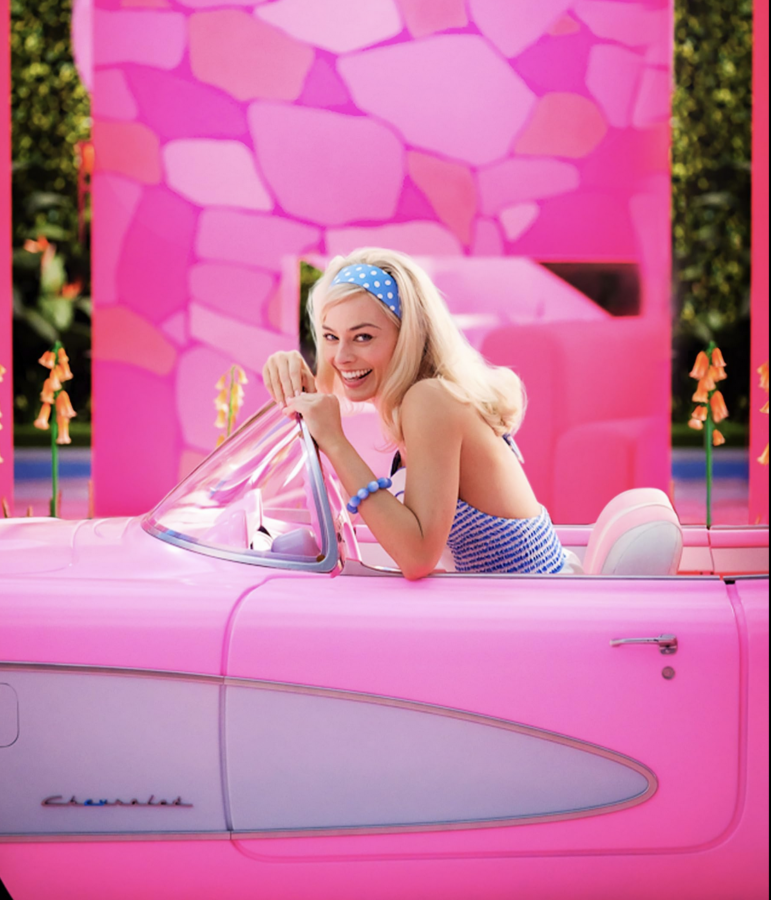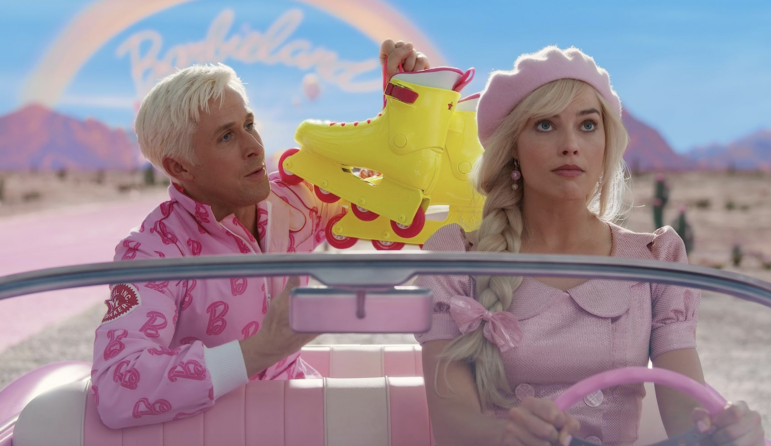
Editor’s note: There’s some pretty steamy ancient Akkadian poetry in here.
Once upon a time there was a beautiful goddess-queen who became obsessed with thoughts of the underworld and decided she had to see it for herself, to understand the inexorable mystery that draws all living things toward their death. She succumbs to the same end as all living things. Yet help reaches her, and she escapes back to her own pleasant and lovely realms unscathed but changed by her experience.
Upon her return, she discovers her lover has taken her throne, covered himself in her glory, and upended her kingdom. She must take it back from him, and exchange him for her own presence in the underworld as no one is allowed to escape death.
The goddess-queen in question here is Inanna, ancient Sumerian fertility goddess and principal character in the first story written by an author who signed her name in human history. Two thousand years before the common era, a woman named Enheduanna committed to clay tablets the story of traveling to the underworld. This story has many versions, many translations, and the original meanings are somewhat obscure to us across the gulf of time.
The most recent version of this story is Greta Gerwig’s new film, Barbie.

Margot Robbie as Barbie in Greta Gerwig’s “Barbie” [Warner Bros Discovery]
I’m not suggesting that filmmaker Gerwig and her partner Noah Baumbach set out intentionally to rewrite this myth using Mattel’s most recognizable property in all her blonde ambition. I’m not even suggesting that one directly influenced the other. Many stories involve a magical journey between realms that enjoy a mysterious relationship of causality and form, but Barbie and the tale of Inanna have more in common than two stories separated by 4000 years typically would, because some things never go out of style.
(What follows contains spoilers both for the 2112 B.C.E hymn and the 2023 C.E. film.)
In the beginning of Inanna’s tale, she’s at the height of her powers when she is captivated by thoughts of the underworld: “From the great heaven the goddess set her mind on the great below.”
When Barbie opens, Margot Robbie is Stereotypical Barbie: white and blonde and thin and bubbling with joy. But even with all her power and perfection intact, Barbie starts thinking of death for reasons she can’t explain. She awakens to something less than her normal perfect satisfaction. In the middle of a party, she asks her friends: “Do you guys ever think about dying?”
Inanna is thinking about dying. She thinks about it so much that she leaves her home to find out what death is about: “Inanna abandoned heaven, abandoned earth, and descended to the underworld.” The goddess ritually robes herself for this journey, wanting to announce to all who see her what her status is in the world above. She must then give up all of these symbols as she passes through the doors of death.
Barbie’s doors don’t lead to what we’d recognize as an underworld, but to our world, where Mattel owns her and nothing is as it should be. Because Barbie Land is a matriarchal queendom, where all women are powerful and respected, Barbie cannot conceive of our world being anything less. Her magical ability to fracture her identity and fulfill all her dreams at once must, in her mind, carry over to the girls and women who are her dreamers. Hence Margot Robbie is Barbie, but so is Issa Rae (this Barbie is President), Hari Nef (this Barbie is a doctor), Sharon Rooney (this Barbie is a lawyer), and so are all the others.

Margot Robbie’s Barbie surveys the dream houses in Barbie Land in Greta Gerwig’s film “Barbie” [Warner Bros Discovery]
Stereotypical Barbie confronts a world in which she’s viewed as an object, not because she’s a doll, but because she’s a woman. She asks to speak to the woman in charge at Mattel only to be introduced to the CEO, Will Farrell. Like Inanna, Barbie clothes herself in the symbols of her rank: pink, perfect clothes and the unflagging optimism of someone who feels like she’s conquered every enemy. And like Inanna, she is denuded of these things through a series of indignities: we see Barbie called a fascist and accused of setting feminism back 50 years by a sharp-tongued teen. She’s treated like a profitable stock animal by her corporate overlords. Her outfits lose cohesion, her hair goes flat, and her spirits sink, until she lies face down in the street like the discarded doll she is.
Inanna, too, is discarded. Once she has borne the indignities of death and judgement, she is like any other dead body in the underworld. Inert, she has become an object, and one without a purpose. “The afflicted woman was turned into a corpse. And the corpse was hung on a hook.”
Both Barbie and Inanna are at their nadir. Both have allies who are not entirely friends. Inanna has a sister who rules in the underworld, Erec-ki-gala (often rendered as Ereshkigal), who receives Inanna and is the one to point out her body to those who come to retrieve her, saying: “That corpse is that of your queen.” Barbie has a psychopomp who instructs her on how to cross the barrier between worlds: Weird Barbie, played by Kate McKinnon. She also has Gloria, a Mattel employee played by America Ferrera, and Sasha, her sharp-tongued teen daughter, played by Ariana Greenblatt. Gloria reveals that she’s the one who has been playing with this Barbie, causing her to think of death and to suffer the loss of her eternal beauty.

Ryan Gosling as Ken and Margot Robbie as Barbie in Greta Gerwig’s new film “Barbie” [Warner Bros Discovery]
Ken plays a small role, both in Barbie’s life and in her film. Ken makes overtures to Barbie that they should be closer, that they should spend the night together, that she should be his in some more meaningful way. Barbie rebuffs him, asking what the point of that might be when she has so many friends with whom to share her life.
Inanna is somewhat more interested in her partner and their shared fertility. Earlier texts, from around 2800 B.C.E, detail Inanna’s relationship with her own steady date: Dumuzi. A poem on their courtship makes their relationship plain and highly recognizable to most Pagans whose practice is focused on fertility rites:
“Who will plow my vulva?
Who will plow my high field?
Who will plow my wet ground?
As for me, the young woman,
Who will plow my vulva?
Who will station the ox there?
Who will plow my vulva?
Dumuzi replied:
—Great Lady, the king will plow your vulva.
I, Dumuzi the King, will plow your vulva.
Inanna:
—Then plow my vulva, man of my heart!
Plow my vulva!
At the king’s lap stood the rising cedar.
Plants grew high by their side.
Grains grew high by their side.
Gardens flourished luxuriantly.”
Barbie does not want anyone to plow her vulva. She tells the construction workers in Venice Beach who catcall her that she does not have a vagina, in exactly those words. Offended, Ken assures them that he himself has all the genitals.
Ken – Ken with all the genitals, with his flesh-colored lump where he would prefer a rising cedar – is about to cause problems on purpose. Discovering that the real world has a bias toward men, that people will treat him with respect bordering on deference simply because he’s male-presenting, is a revelation for the doll who would be man. He becomes obsessed with overt symbols of masculinity: horses, brewskis, and Matchbox 20. Returning from his own trip to the underworld, Ken is armed with two things: knowledge of the patriarchy and the lyrics to a 90s song that plainly describe his modus operandi from here on out:
“I wanna push you around
Well I will, well I will
I want to push you down
Well I will, well I will
I wanna take you for granted”
Inanna and Barbie both return to find they’ve been usurped by the man in their lives.
Inanna’s Dumuzi is in her place, ruling and enjoying the splendor that was hers: “There was Dumuzi clothed in a magnificent garment and seated magnificently on a throne.” She sets her companions on them, letting them do the work to remove her boyfriend from his pretense: “The demons seized him there by his thighs.”
Upon Barbie’s return, Ken is living in her dream house. He has established a laughable rule by Kens, who now banter about the love of Kubrick and Snyder. Kendom features Mermaid John Cena alongside the Barbies living in domestic servitude. Formerly brainy Barbies find themselves freed by empty-headed admiration of the Kens in their cosplay. Barbie knows herself betrayed and gives up immediately. Her companions must act for her as Inanna’s do, using the immunity to patriarchy they gained in the real world to inoculate the Barbies through deprogramming talks and direct action to control the constitution of Barbie Land.
A lot changes in 4000 years. Inanna was a deity worshiped by people all over Mesopotamia, and later in the Middle East as a whole. She was syncretized and absorbed into other goddesses, notably as Ishtar, who is mentioned in the Bible as consort to Tammuz (likely another name for Dumuzi) 1000 years after Enheduanna’s poems. She was (and is) an idea, and untouchable and recognizable image – a goddess-queen with many faces, capable of traveling between worlds and confronting death itself.
Barbie is another untouchable idea, known by different faces and different names across nearly every country on earth. She’s 64 years old and has more money and arguably more power behind her stories than Inanna ever did. Clay breaks down into dirt, even when it’s been fired hard and made to last. Barbie is made of molded plastic and her body will take between 450 and 1000 years to decompose.
It’s difficult to imagine the people who might succeed us on this earth and what they might imagine about us, examining our fragmentary texts and artifacts shaped like thin blonde women with perky breasts. Barbie’s not a fertility figure; she’s never depicted pregnant or nursing. She’s a symbol of a life lived freely, based on her own pleasure, and with a consort who knows that while she is everything, he’s just Ken.
In 4000 years, we’ve gone from a story of a goddess who could defeat death to a doll who gives up her immortality to succumb to it. Both of them make their descent to the underworld to learn the secrets of mortality, only to discover that their powers could not go unchallenged by the men in their lives.
In 4000 years, some other Pagan scholar whose pantheon is made up of figures from the foreign country of the past might be singing an ancient hymn, trying to do honors to a goddess who was not a figure of fertility, but one of freedom and self-determination, one who was powerful enough to choose a mortal life in at least one of her many myths.
I hope she sings to herself with total faith and ecstasy the thing that she knows to be true: that she is a Barbie girl, in the Barbie world.
The Wild Hunt is not responsible for links to external content.
To join a conversation on this post:
Visit our The Wild Hunt subreddit! Point your favorite browser to https://www.reddit.com/r/The_Wild_Hunt_News/, then click “JOIN”. Make sure to click the bell, too, to be notified of new articles posted to our subreddit.
